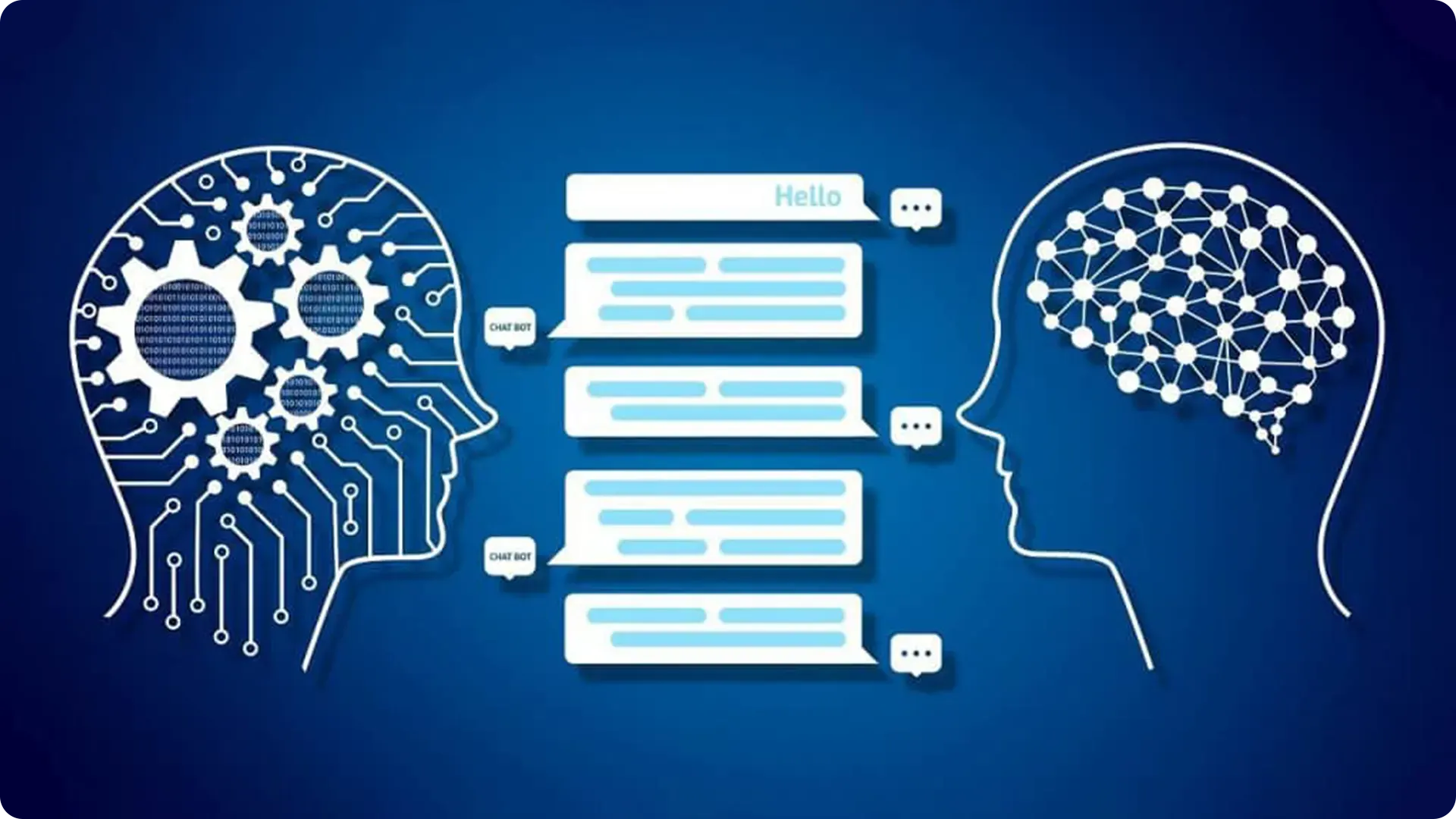
What is NLP? Everything About Natural Language Processing in the AI Era
In the age of rapid technological advancement, humans and computers are increasingly interacting through natural language. However, enabling computers to accurately understand, process, and respond to human language is not a simple task. This is precisely the role of Natural Language Processing (NLP) - a critical field of Artificial Intelligence (AI) that helps computers analyze, comprehend, and interact with human language in an intelligent way.
NLP plays a core role in many modern applications, from virtual assistants, chatbots, and machine translation to information retrieval and data analysis. The development of NLP not only enhances user experience but also opens up new opportunities in the tech industry. So, what exactly is NLP? How does it work? What are its specific applications, and what challenges need to be overcome? Let’s explore these questions in detail with Tokyo Tech Lab in this article!
I. What is NLP?
NLP (Natural Language Processing), is a subfield of artificial intelligence (AI) focused on enabling computers to understand, interpret, and generate human language. NLP combines linguistics, computer science, and machine learning to build systems capable of interacting with text or speech in a natural, human-like manner.

Unlike programming languages that have fixed structures, human natural language is highly complex, containing multiple meanings, varying contexts, spelling errors, slang, and emotional expressions. Therefore, NLP plays a crucial role in helping computers better understand human language.
II. How Natural Language Processing - NLP Works
Natural Language Processing (NLP) operates through multiple stages to help computers effectively understand and process human language. Below are the key steps in the NLP process:
1. Language Preprocessing
Before an NLP system can analyze and understand text or speech data, it must first prepare the data through the following steps:
- Removing punctuation and special characters: Punctuation marks like periods, commas, and question marks, which are often irrelevant in syntax analysis, are eliminated.
- Case conversion: Text is converted to lowercase to avoid unnecessary case sensitivity.
- Removing stop words: Common words with little semantic value, such as "is," "and," "of," are filtered out to focus on more meaningful words.
- Tokenization: Text is divided into smaller units, such as words or phrases, for easier analysis.
- Word normalization (Lemmatization & Stemming): Words are converted to their root forms to ensure consistency in analysis.

2. Syntax and Semantic Analysis
After preprocessing, the NLP system performs deeper analysis of the language’s structure and meaning:
- Parsing: Identifying relationships between words in a sentence and analyzing grammar to understand how words form meaning.
- Part-of-Speech (POS) Tagging: Determining whether words are nouns, verbs, adjectives, etc., to aid in comprehension.
- Named Entity Recognition (NER): Identifying key entities such as people’s names, locations, organizations, and dates.
- Dependency Parsing: Understanding how words in a sentence relate to each other to extract deeper meaning.
3. Context and Meaning Understanding
After syntax analysis, the system must understand the true context and meaning of the sentence:
- Word Sense Disambiguation (WSD): Since words can have multiple meanings, NLP systems must determine the correct meaning based on context.
- Coreference Resolution: Identifying what pronouns such as "he," "it," or "that" refer to in a text.

4. Machine Learning & AI Models in NLP
NLP uses artificial intelligence models to train systems to understand language in a way similar to humans. Two common approaches are:
- Supervised Learning: The model is trained on labeled data to learn classification or prediction tasks.
- Unsupervised Learning: The model detects patterns in data without predefined labels, often used for text clustering or topic detection.
5. Natural Language Response Generation
Once the system understands text or speech, it can generate appropriate responses, including:
- Text Generation: Creating responses or content based on input context.
- Machine Translation: Converting text from one language to another.
- Text Summarization: Extracting key information from lengthy content.
- Sentiment Analysis: Evaluating whether a piece of text expresses a positive, negative, or neutral sentiment.

NLP is a complex process involving multiple stages, from preprocessing and syntax analysis to semantic understanding and response generation. With the advancement of deep learning and artificial intelligence, NLP is becoming more accurate and is now widely applied in various real-world domains.
III. Key Tasks in NLP
Natural Language Processing (NLP) is a vast field with various tasks aimed at helping computers understand, process, and generate human language accurately. Each task plays a crucial role in information extraction, semantic analysis, and improving human-machine interaction. Below are the main tasks in NLP:
1. Text Classification
Text classification is the process of assigning labels to text based on its content. It is one of the fundamental NLP tasks that help computers understand the meaning of text and categorize it accordingly.

Common applications of text classification include spam email filtering, news categorization, and product review analysis. For instance, Gmail uses NLP to classify emails into categories such as "Primary," "Social," "Promotions," or "Spam." In e-commerce, systems can automatically determine whether a review is positive, negative, or neutral to help businesses understand customer feedback.
Popular algorithms used in text classification include Naïve Bayes, Support Vector Machine (SVM), and deep learning models like LSTM and Transformer.
2. Named Entity Recognition (NER)
Named Entity Recognition (NER) is the process of identifying and classifying key entities in a text, such as names of people, locations, organizations, dates, and currency units. This task helps computers gain a better understanding of the context within a text.
NER has diverse applications. In the legal field, systems can extract critical information from contracts, such as company names, monetary amounts, and signing dates. In journalism, NER helps automatically tag articles by recognizing politicians, locations, or major events. Additionally, virtual assistants like Siri and Alexa use NER to identify place names or people to provide more accurate responses.
For example, in the sentence: "Elon Musk is the CEO of Tesla and SpaceX," an NLP system can identify "Elon Musk" as a person's name and "Tesla" and "SpaceX" as organizations. Popular algorithms used in NER include Conditional Random Fields (CRF), BiLSTM-CRF, and Transformer-based models like BERT.
3. Sentiment Analysis
Sentiment analysis is the process of determining the sentiment expressed in a piece of text, typically categorized as positive, negative, or neutral. This is a crucial task for evaluating user opinions on social media, product reviews, and customer service feedback.

Common algorithms used in sentiment analysis include Naïve Bayes, LSTM, GRU, and BERT models.
4. Text Summarization
Text summarization helps condense lengthy content while retaining essential information. There are two main approaches to text summarization:
- Extractive Summarization: Selects the most important sentences from the original text.
- Abstractive Summarization: Generates a new summary by rephrasing the content concisely.
Applications of text summarization include news summarization, research paper summarization, and meeting note generation. For example, an article about an economic event can be summarized into a short paragraph containing the key details.
Popular algorithms used in text summarization include TextRank, Transformer models like T5, BART, and GPT.
5. Machine Translation (MT)
Machine translation is one of the most notable applications of NLP, allowing text to be automatically translated from one language to another.
Modern machine translation systems, such as Google Translate and DeepL, can translate hundreds of languages with high accuracy using deep learning models. Additionally, machine translation is applied in specialized fields like medical, legal, and technical document translation.

There are three main approaches to machine translation:
- Rule-based Translation
- Statistical Machine Translation (SMT)
- Neural Machine Translation (NMT)
Transformer models like BERT, GPT, and T5 have significantly improved translation quality compared to traditional methods.
6. Speech Recognition
Speech recognition is the process of converting spoken language into text, forming the foundation of virtual assistants like Siri, Google Assistant, and Alexa.
Speech recognition applications extend beyond smart devices, including support for people with disabilities, meeting transcription, and voice-controlled device operation.
Common algorithms used in speech recognition include Hidden Markov Model (HMM), DeepSpeech, and OpenAI's Whisper AI.
NLP tasks play a vital role in helping computers understand, analyze, and respond to human language. NLP not only enhances information retrieval quality but also revolutionizes how we interact with technology.
In the future, with advancements in AI and deep learning, NLP will become even more powerful, making applications in translation, chatbots, and data analysis more accurate and natural.
IV. Benefits and Challenges of NLP
Natural Language Processing (NLP) is increasingly playing a crucial role in various fields, from machine translation and information retrieval to big data analysis. Thanks to NLP, humans can interact with machines more easily, enhance work efficiency, and optimize numerous operational processes. However, alongside its significant benefits, NLP also faces many technical and practical challenges that need to be addressed.
1. Benefits of NLP
1.1 Automation and Increased Work Efficiency
NLP enables fast and accurate processing of text-related tasks, minimizing human intervention in repetitive tasks such as data entry, document classification, or email processing. This not only saves time but also helps businesses improve productivity and reduce operational errors.

Additionally, NLP supports automation in processes like spell checking, extracting key information from text, and content summarization, allowing users to quickly grasp essential information without reading entire documents.
1.2 Enhancing User Experience
NLP plays a vital role in improving customer experience through automated communication systems such as chatbots and virtual assistants. These systems can understand user queries and respond naturally, making it easier for users to find information or receive support.
Moreover, NLP is used for content personalization, recommending information tailored to individual users' needs based on their search history or interaction behavior. This helps optimize the experience on digital platforms such as social media, e-commerce, and online services.
1.3 Supporting Big Data Analysis and Processing
Text data is crucial in fields like finance, healthcare, and marketing, but manual analysis is time-consuming and prone to errors. NLP automates the process of analyzing and extracting critical information from large datasets, facilitating faster and more accurate decision-making.

NLP also helps detect trends from unstructured text data, such as customer reviews, social media posts, and business reports, providing valuable insights for organizations in strategic planning and market trend forecasting.
1.4 Improving Information Retrieval
Traditional search engines primarily rely on keywords, but NLP enhances contextual understanding and intent recognition to deliver more accurate results.
With NLP, systems can identify relationships between keywords and analyze queries in a way that mimics human thinking rather than merely matching words in a text. This improves search efficiency, making information retrieval faster and more effective.
2. Challenges of NLP
2.1 The Complexity of Natural Language
Human language has a complex structure with many nuances, different grammatical rules, and diverse expressions. A single word can have multiple meanings depending on the context, making language processing challenging for computers.

Furthermore, language constantly evolves with the emergence of new words, slang, and expressions, requiring NLP models to be regularly updated to maintain accuracy.
2.2 The Need for Large Datasets
Modern NLP models, especially deep learning-based ones, require vast amounts of training data to function effectively. Collecting, cleaning, and labeling this data is not only costly but also time-consuming.
Moreover, text data can contain spelling errors, incomplete sentences, or informal expressions, making processing even more complex.
2.3 Bias in NLP Models
NLP models learn from training data, and if this data contains biases, the models will reflect those biases. This can lead to unfair or inaccurate decisions, especially in applications like recruitment, finance, and law.

Addressing bias in NLP requires proper evaluation and adjustment methods to ensure objective and reliable outputs.
2.4 Limitations in Multilingual Processing
While widely spoken languages such as English, Chinese, and Spanish have abundant training data, less common languages like Vietnamese and Thai face challenges due to a lack of high-quality data.
Differences in syntax, vocabulary, and writing systems among languages also add complexity to building NLP models that perform well across multiple languages.
V. Real-World Applications of NLP
Natural Language Processing (NLP) is increasingly being applied across various fields, enhancing human-machine interaction. This technology not only automates processes but also improves user experience, enabling faster and more accurate information processing.
1. Virtual Assistants and Chatbots
Virtual assistants and chatbots leverage NLP to understand natural language, making human-machine communication more seamless. Virtual assistants can process voice commands, respond contextually, and assist with tasks such as searching for information, scheduling appointments, or controlling smart devices. Meanwhile, chatbots are integrated into customer service platforms to automatically answer queries, provide consultation, and reduce workload for human agents.

2. Search and Information Retrieval
Modern search engines like Google and Bing utilize NLP to understand user intent and deliver more relevant results. These systems analyze context beyond just keywords to provide accurate answers. Additionally, NLP is used to automatically suggest content based on users’ search behavior and preferences.
3. Machine Translation and Multilingual Support
Machine translation is one of NLP's most well-known applications, helping people overcome language barriers in communication and work. NLP-powered translation systems analyze sentence structure, semantics, and generate more natural translations. Moreover, NLP is used to create automatic subtitles for videos, ensuring effective multilingual content delivery.
4. Applications in Finance and Banking
NLP plays a crucial role in finance by processing data quickly and accurately. Systems analyze financial reports and market news to assist in investment decision-making. Additionally, banking chatbots help customers check account information, conduct transactions, and receive automated financial advice.
5. Speech Recognition and Voice-to-Text Conversion
Speech recognition technology utilizes NLP to convert spoken language into text with high accuracy. This is beneficial in various domains, such as automatic meeting transcription, improving accessibility for visually impaired individuals, and enhancing user experience on smart devices.

6. Content Creation and Automated Writing
NLP enables automatic content generation, from writing reports and summarizing news to creating stories and poetry. This technology is widely used in journalism, marketing, and digital content creation. Tools like GPT assist users in writing articles, generating content ideas for blogs, advertisements, and novels, saving time and increasing productivity.
VI. Conclusion
NLP is not only a critical branch of artificial intelligence but also a driving force for innovation across multiple industries. As technology continues to evolve, NLP is becoming increasingly sophisticated, allowing computers to understand and respond to human language more accurately and naturally. However, this field still faces challenges, particularly in processing semantics, context, and the vast diversity of languages.
In the future, NLP is expected to achieve groundbreaking advancements, expanding its applications in education, healthcare, finance, and various other industries. More than just an advanced technology, NLP is reshaping human-machine interaction, unlocking unprecedented potential in the digital era.
Thank you for taking the time to explore this article! We hope you found the information helpful. Don't forget to follow us for more exciting insights!
SHARE THIS ARTICLE
Author
Huyen TrangSEO & Marketing at Tokyo Tech Lab
Hello! I'm Huyen Trang, a marketing expert in the IT field with over 5 years of experience. Through my professional knowledge and hands-on experience, I always strive to provide our readers with valuable information about the IT industry.
More Posts



About Tokyo Tech Lab
Services and Solutions
Contact us
© 2023 Tokyo Tech Lab. All Rights Reserved.







